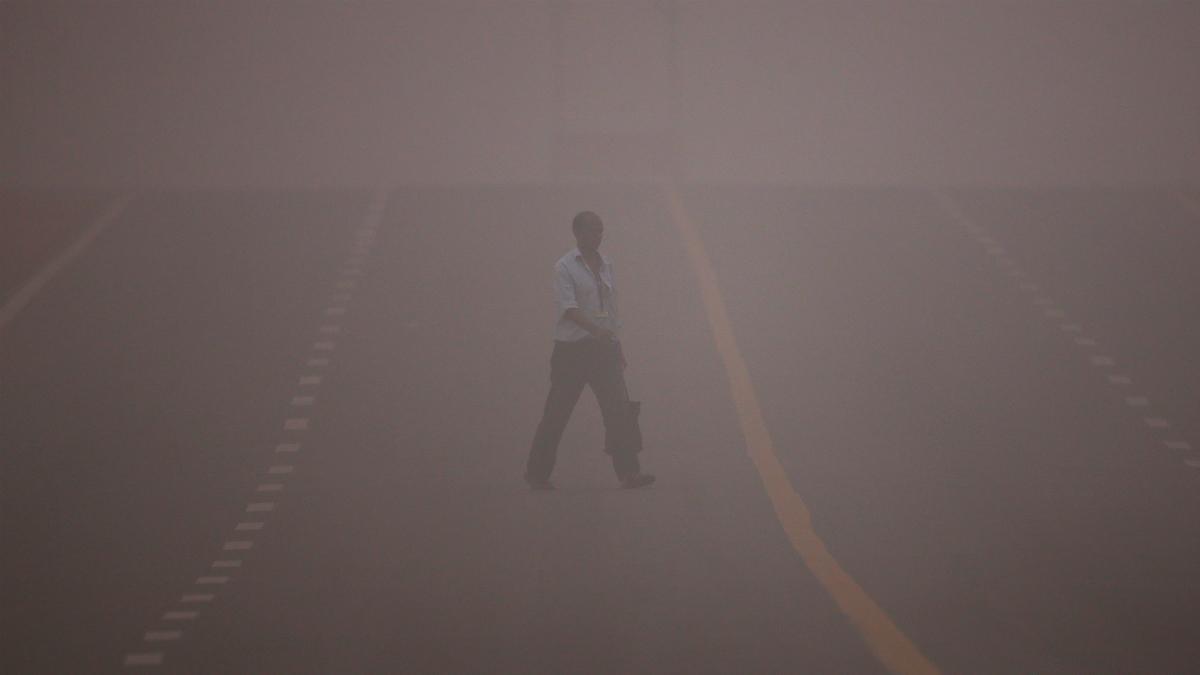A man crosses a road amidst the heavy smog in Delhi, India, on Nov. 6, 2016.
This past weekend was frightening for residents of New Delhi. The city was suddenly enveloped in what looked like a cold January fog, but the mild weather made that impossible.
In fact, Delhi was surrounded by smoke, and millions of people were breathing it.
Terrified residents scrambled to purchase masks and air purifiers. Many complained of irritated eyes and lungs. A health advisory was issued, warning against going outside or undertaking physical activity in the open, especially for children and the elderly.
"Pollution has increased to an extent that [the] outdoors in Delhi are resembling a gas chamber,” said Arvind Kejriwal, the chief minister of Delhi, at a news conference on Saturday.
Visibility remained poor through the day, and air quality indexes reported that dangerous pollutant levels were reaching 17 times the safe limit.
On Monday, schools were closed and some offices were allowing employees to work from home.
An array of seasonal pollution has combined with high humidity and low wind to cause a perfect storm for Delhi’s deteriorating air quality, currently ranked the worst in the world.
But for the city’s chief minister, the blame lies squarely with the neighboring agricultural states of Punjab and Haryana, where crop fires are common.
After harvesting their paddy crops, most farmers in the region resort to burning the residual waste or “stubble,” emitting massive levels of toxic aerosols and gases. (Environmentally friendly methods like composting would take up to 45 days — the equipment and capital required proves too expensive and time consuming for most farmers, who are in a hurry to plant the next crop.)
Ministers from these states say they aren’t to blame. They fault Delhi’s year-round record of poor air quality, which has been drawing attention since the World Health Organization declared the Indian capital the most polluted city in the world in 2014. (It has enjoyed some breaks from the top spot in that time.)
Most politicians have avoided discussing one serious contributor to the pollution spike: Diwali. The annual festival was celebrated in India on Oct. 30, and thousands of fireworks were set off across the country and the capital. Each one emits harmful pollutants that are far above WHO safe limits.
Though a growing civic movement against the tradition made a dent in sales this year, many Hindus consider bursting firecrackers to be a part of their religious freedom. Indeed, the Delhi government’s post-Diwali ban on the explosives excludes those used for “religious functions.” Politically, it’s a bad move to restrict Hindu celebrations.
Instead, the Delhi state government is implementing a slew of short-term measures that won’t attract so much public ire. There is a temporary ban on construction, and polluting factories have been shuttered. Earlier this year, the city also attempted road rationing for two-week periods to reduce emissions from vehicles.
Environmental activists have criticized these measures as temporary at best. But long-term solutions — like improving public transport and cycling infrastructure, or greening power consumption at factories — are not on the horizon.
For now, leaving town may be the best way for Delhi’s choking inhabitants to find relief.
Nimisha Jaiswal reported this story from New Delhi, India.
